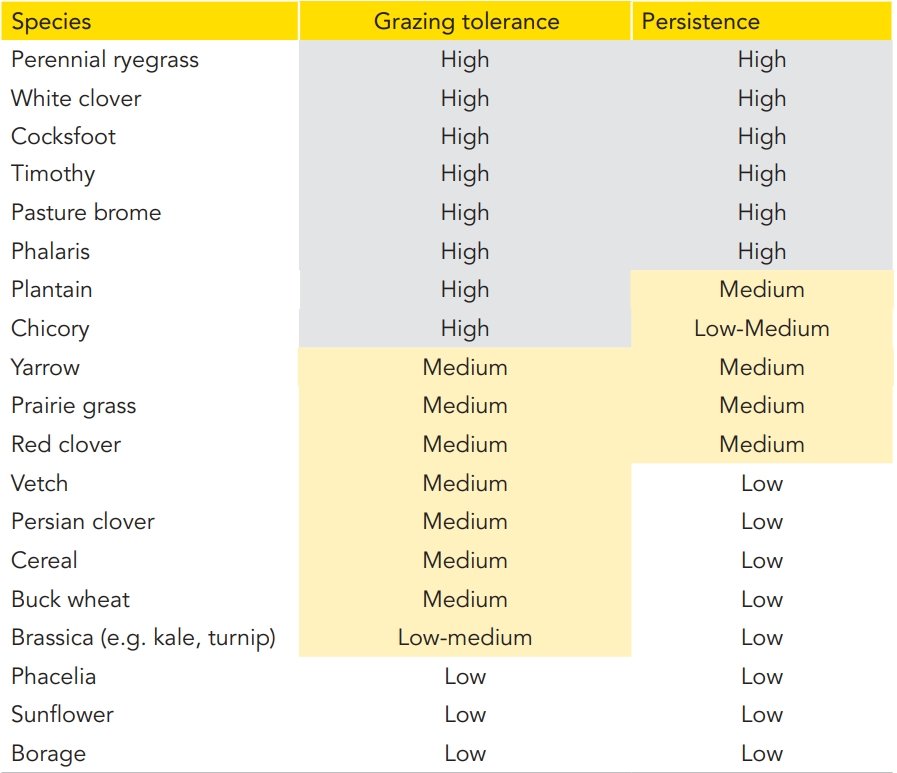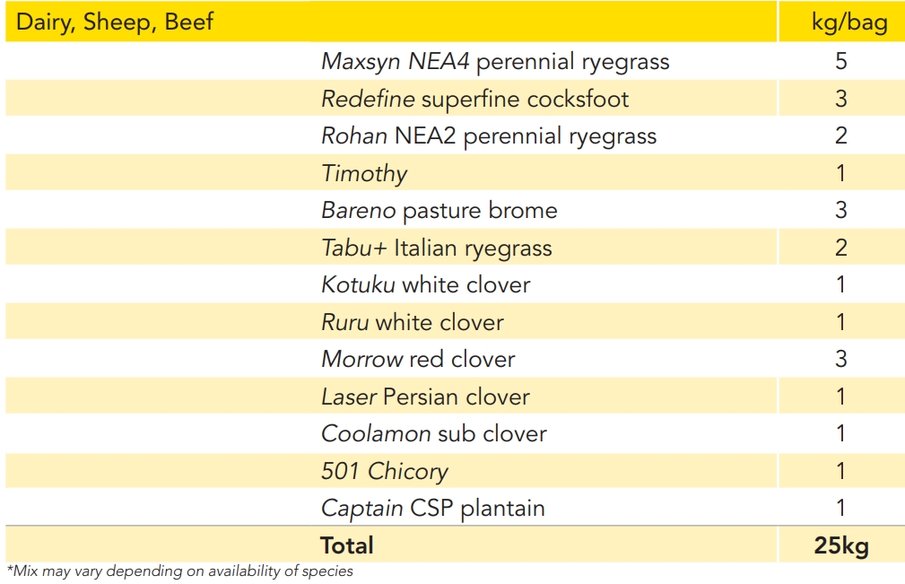Diverse Pasture Premix
Introduction
Pastures containing many different species have recently become more popular with Regenerative Agriculture. There is little science behind many mixes, however, and they typically lose diversity over time. Our Diverse Pasture Premix (see below) contains known cultivars for those who wish to try one.
Co-existence and functionality
Multi-species pastures have been studied and grown in New Zealand for decades. We have learned much about which species grow best together. Lincoln University research shows regardless of how many species are sown, grazing decreases diversity, and no more than three functional groups will end up comprising 90%+ of species present, grass, clover and herbs.
Ryegrass and white clover remain the two most widely sown permanent pasture species in NZ despite the abundance of alternatives. Ryegrass is a highly efficient photosynthesiser across most of NZ. Its growth habit, productivity, and grazing tolerance allow it to thrive in a range of climatic conditions and livestock systems.
Research has repeatedly demonstrated white clover adds significant value to our grazed systems, improving animal nutrition and overall pasture growth and capturing atmospheric nitrogen.
Even this widely used two-species mix is a complex relationship requiring careful management to maintain both productivity and sustainability. Every time another species is added to the pasture mix the level of complexity increases, and it may need different (and in many cases incompatible) management as the grazing tolerance and persistence of species varies hugely.
Varying management needs for species

Diverse Pasture Premix
We produce a pre-mix detailed below, for sowing at 36 kg/ha. It comes in 25 kg bags to sow at 1.4 bags/ha, and is available in either treated or bare seed.
The Diverse Pasture Premix combines high yielding Maxsyn NEA4 perennial ryegrass with the persistence of Rohan SPR perennial ryegrass. Redefine cocksfoot, Bareno grazing brome and timothy add diversity, while Tabu+ gives greater cool season production. Captain plantain and 501 Chicory supply pasture herbs, a lower N footprint, and in the case of 501 a deep taproot. Kotuku large leaved and Ruru medium leaved white clovers, and Morrow red clover have different growth habits, high feed quality advantages, and nitrogen fixation. Laser Persian clover and Coolamon sub clover are annual clovers to improve feed quality from late spring into summer and will reseed if managed correctly.
What's in a bag?

Your herbicide options are limited with this mix, so choose your paddock carefully to be free of problem weeds. Good seed bed preparation and weed control before sowing are essential. There are no specific requirements for soil nutrient levels, but a good base nutrient status will help all species perform

